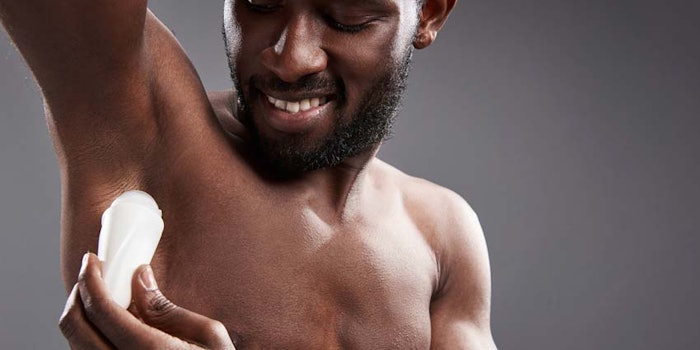
Fresh as a daisy and positioned for growth, the global deodorant market is predicted to reach US $30.76 billion by 2026, expanding at a CAGR of 4.0% from 2019 to 2026, according to a report by Fortune Business Insights.
Driving this demand is the growing consumer inclination toward a hygienic lifestyle, which of course has been amplified in response to the COVID-19 crisis. Pre-COVID-19, Statista similarly projected the combined antiperspirant and deodorant market would expand to reach $94.33 billion by 2025. The firm estimated the antiperspirant and deodorant market at ~$74.55 billion in 2019.
The bottom line is: hygiene is in the mainstream, and antiperspirants and deodorants are among the categories riding this wave to the top. Considering this, we offer the following brief literature review related to antiperspirants and deodorants.
Zinc Oxide Reduces Odor-causing Microbes
Ågren, M.S., Ghathian, Khaled, S.A., ... Jorgensen, L.N., et al.; Acta Dermato-Venereologica
This study sought to determine the effects of zinc oxide on the axillary microbiota, odor and pH in the armpit areas of 30 healthy volunteers. For 13 days, one axilla of each volunteer was treated with zinc oxide and the other, with a placebo. Results showed the zinc oxide treatment decreased the total bacterial growth, specifically that of the odor-producing entities Corynebacterium spp. and Staphylococcus hominis, while the skin surface pH increased. Compared with the placebo, the zinc oxide treatment also reduced self-perceived malodor.
Lemon Aspen Extract Inhibits Malodor-forming Bacteria
Wright, M.H., Wood, A., Greene, A.C. and Cock, I.E.; Pharmacogn Commn.; doi: 10.5530/pc.2020.2.18
According to these authors, Acronychia acidula F. Muell., also referred to as lemon aspen or pigeon berry, is known for its antimicrobial properties. The present study therefore explored its efficacy to inhibit bacteria associated with malodor formation. MIC values confirmed that A. acidula aqueous fruit inhibited the growth of B. linens, C. jeikeium and P. acnes. Similarly, methanolic fruit extracts inhibited the growth of B. linens and C. jeikeium; no growth inhibition of P. acnes was observed.
Zinc-based Antiperspirant and Deodorant Compositions
Russian Patent RU 2719380 C1; Hilliard Jr., P.R., Kennedy, S., Bielli, C. and Adams, R.P.; Available at Libray.RU
Disclosed in this patent is a group of inventions relating to antiperspirant/deodorant compositions. These comprise: a) an o/w emulsion base containing: an emulsifier, i.e., stearate-2 and stearate-20 or a mixture thereof; vegetable oil; polyol; and water; and b) a zinc-based antiperspirant active dispersed therein. Notably, the composition does not contain aluminum, and the antiperspirant active is stabilized by a film-forming polymer composition. The resulting invention reduces visible sweating, improves zinc resistance on the skin surface, and reduces burning, redness and tingling on the skin.
Daily Aluminum Antiperspirant Use Found Not to Increase Systemic Levels
Letzel, M., Drexler, H., Göen, T. and Hiller, J,; Skin Pharmacol Physiol; doi: https://doi.org/10.1159/000502239
While concerns have been raised over aluminum exposure from antiperspirants and other cosmetics, the dermal uptake of aluminum and its impact on systemic aluminum is poorly understood. This study investigated the effects of daily antiperspirant use on the body's aluminum load under real-life conditions.
Here, 21 healthy subjects used a commercial aluminum-containing antiperspirant for 14 days and aluminum levels were measured in urine and blood plasma before and after exposure. No significant increase in aluminum was measurable, and shaving habits did not influence the results. Further, no correlation could be made between the amount of antiperspirant applied and systemic aluminum levels; although the authors note longer-term data is lacking.
Impact of Hair Removal on Axillary Skin
Evans, R.L., Bates, S., Marriott, R.E. and Arnold, D.S.; International Journal of Cosmetic Science; doi: https://doi.org/10.1111/ics.12648
The present work explored the effects of different hair removal techniques, i.e., shaving, plucking and waxing, on the biology of the underarm skin in Thai female subjects. Before treatment and 30 min and 48 hr after treatment, subjects were assessed for erythema and skin dryness, among other assessments, in one randomized axilla. After treatment, buffer scrubs were collected at 30 min and 48 hr and analyzed for inflammatory cytokines. Results showed all three hair removal techniques increased erythema and skin dryness, although to different degrees. Interleukins IL-1α and IL-1RA also increased, whereas IL-8 decreased.










